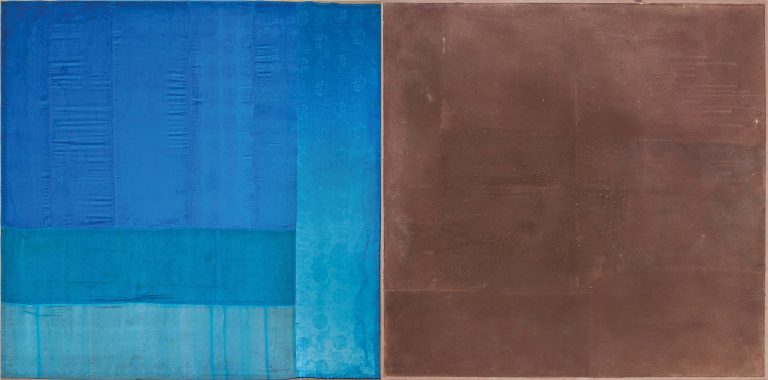We acknowledge the Traditional Owners of the land on which the Queensland Art Gallery | Gallery of Modern Art stands and recognise the creative contribution First Australians make to the art and culture of this country.

Enkhbold Togmidshiirev / Mongolia b.1978 / Benevolence 2013 / Silk, cotton thread, rust and nepheline gel on canvas /200 x 400cm / Proposed for the Queensland Art Gallery I Gallery of Modern Art Collection / © The artist /Image courtesy: The artist and 976 Art Gallery, Ulaanbaatar
Enkhbold TogmidshiirevBenevolence 2013
Not Currently on Display
Enkhbold Togmidshiirev’s restrained colour-field paintings use materials derived from Mongolian nomadic culture, including horse dung, felt, shrubs, ash, rust, sheep skin and tripe. He sources his materials from the countryside when he returns to his homeland. The horse dung, for example, is dried and crumbled, and sifted three times to ensure a fine consistency. It is then applied over a base of gelatine and gel, or mixed into the base directly.Horse dung can differ in colour and texture depending on the season and the environmental conditions of the animals, and so provides the artist with a shifting palette.
Occasionally, Enkhbold incorporates collage into his paintings, such as Benevolence 2013, with fabrics such as cotton, silk and hessian used to vary the surfaces of his works, introducing formal devices like horizontal fields, which recall the paintings of the American abstract expressionist painter Mark Rothko (1903–70).
Enkhbold Togmidshiirev is known for his large-scale, monochromatic canvases and his improvised performances. His performances use portable variations of the traditional Mongolian ger or yurt, and have taken place in both urban and remote locations all over the world. The ger is a temporary home and spiritual space for the artist where he carries out his daily activities.